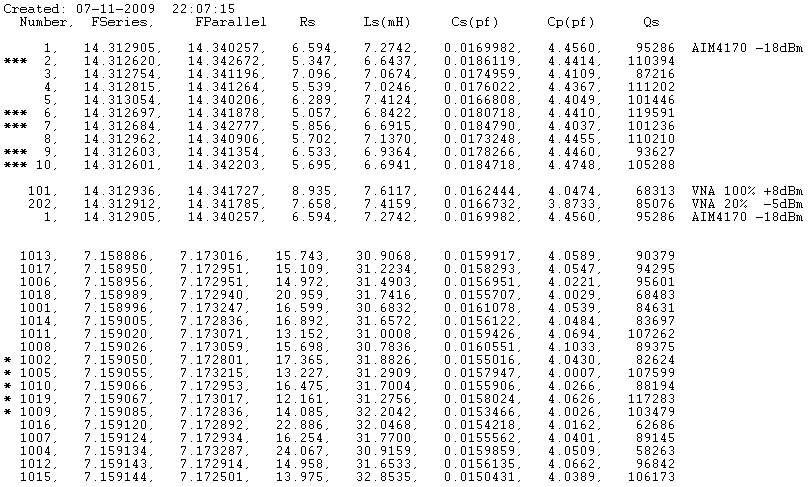

Picking a lower gm_crit actual will mean a lower drive current through the crystal, so using less power. The ECS Selection Tool helps the designer to meet this mandatory requirement, but then allows you to explore options. This ensures the crystal will start-up and is the priority. Low Drive – The ECS Selection Tool lists all parts that have a Gain Margin of 5 or greater for the specific STM32 processor with the selected or standard drive level.Too low and the crystal won’t start-up, too high and the crystal could be damaged or the oscillator loop saturate, so that loop gain drops <1 and the oscillator could stop. Drive Level – Drive level is an important parameter to meet at both ends of the spectrum. In some applications, tighter tolerance is important, and this is again where the ECS Selection Tool helps to narrow the range of options.Į. Tolerance – Most designs will look for a standard 20ppm tolerance crystal tolerance is the manufacturing measured ppm range at 25☌. The ESC Selection Tool helps here, allowing the designer to make these considerations.ĭ.

Due to the crystal blank size, the ESR increases as package size reduces, this in turn impacts the gm_crit of the crystal. Different package sizes offer different constraints, one of the major parameters is the ESR. These range from 1.2 x 1.0 mm to 8.0 x 3.8 mm. ECS Inc offers the widest selection of watch crystals in the industry with referenced part numbers for all STM32 MCU’s. Package Size – As mentioned above the trend is for smaller package sizes, as driven by mobile wireless solutions. Cost increases with further package size reduction.Ĭ. ECS has the largest selection in this size as STM32 Reference Designs, with 20 options (Ref #2 page 36). The trend towards smaller sizes are generally with 2.0 x 1.2 mm the next used option. The 3.2 x 1.5 mm size is currently the largest volume seller, so we see prices very competitive in this size. Cost – Mass production volumes impacts the global market for all BOM items that make up a crystal resonator. The time from 0V to start-up of stable oscillation is shown as start-up time.ī. A greater depth explanation is discussed in Section 5 that covers gain margin.įigure 1 shows a typical V dd rise from 0V and how oscillator closed loop gain increases until unity gain is reached, and the oscillator loop stabilizes, locking onto the resonator frequency. Making any of these lower improves gain margin that improves start-up. The datasheet parameters that affect start-up are: CL, ESR and C0. Start-up – Start-up performance can be looked at in two ways firstly, if the oscillator will start-up consistently in the application under environmental conditions, and secondly how long it takes to start-up at power up.
Crystal filter design calculator series#
See link: STM32 MCU Series LSE 32.768 kHz Crystal Selection Toolģ. Spec parameters that impact STM32 MCU crystal oscillator designĪ. The tool has been specifically designed for the range of STM32 MCU’s. Will the crystal meet the cost targets set by the design?ĮCS Inc has created a tool that makes these choices easier to bring together. Will the crystal size fit the applications needs is it small enough, lower drive or AEC-Q200?ĭ. Will the crystal oscillator meet the power drain needs of the application?Ĭ. Will the crystal meet design guidelines and operate as planned?ī. What overall considerations should a designer look at when choosing a crystal?Ī. Table 1 – displays the range of STM32 processor familiesĢ. Other MCU’s like STM32L1, or F4, are fixed drive levels, and may have less flexibility. These offer designers LSE oscillators with modifiable on the fly transconductance (dynamically) like the STM32L0 and others in this category. Many of the STM32 MCU’s offer a variable drive level. The designer’s choice at this stage to use an ultra-low power processor will have a major impact later in the design of the oscillator loop. Power level of the architecture is the key factor for the oscillator design that follows.

Some of these choices are outside the remit of this paper, like clocking speed, internal architecture and memory levels that impact the overall design. Table 1 shows the range of STM32 processor families and how they have been matched to different application verticals. Picking the desired MCU family is obviously the first choice a designer must consider.

Written by Dean Clark, European Director of Operations at ECS Inc.


 0 kommentar(er)
0 kommentar(er)
